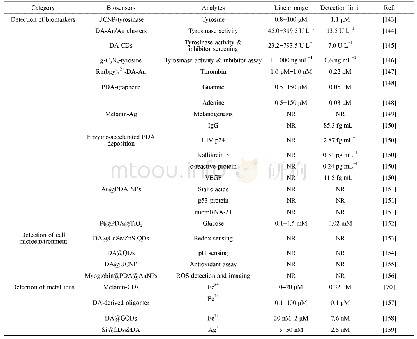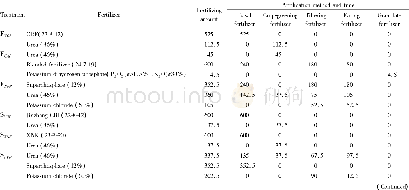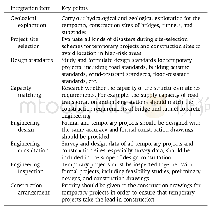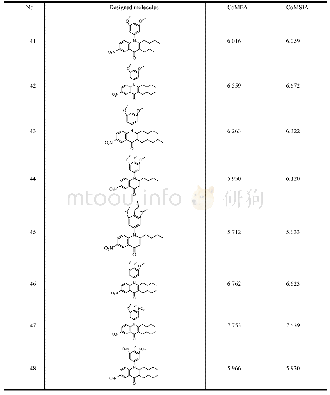《Table 3 The design principles and applications of melanin/PDA-based biosensorsa)》
 提示:宽带有限、当前游客访问压缩模式
提示:宽带有限、当前游客访问压缩模式
本系列图表出处文件名:随高清版一同展现
《Melanin/polydopamine-based nanomaterials for biomedical applications》
a) UCNP:Upconversion nanoparticles;DA:Dopamine;CDs:Carbon dots;g-C3N4:Graphitic C3N4;PDA:Polydopamine;NR:Not reported;IgG:Immunoglobulin G;HIV p24:HIV capsid antigen p24;VEGF:Vascular endothelial growth factor;QDs:quantum dots;ROS:Reactive oxygen species;
Natural melanin is formed by the specific enzymatic reaction of tyrosine in the presence of tyrosinase,and the formed melanin can induce fluorescence quenching via photo-induced electron transfer(PIET)process between melanin and fluorescent materials.Based on this,various melanin/PDA-based biosensors are synthesized by simulating the formation process of melanin.As summarized in Table 3,melanin/PDA-based biosensors are widely used for the detection of biomarkers and cell microenvironment.Moreover,due to the high metal ions chelating capacity,melanin/PDA-based biosensors can also be used for the detection of metal ions with high sensitivity and selectivity.
| 图表编号 | XD0034632700 严禁用于非法目的 |
|---|---|
| 绘制时间 | 2019.02.01 |
| 作者 | Chao Qi、Lian-Hua Fu、Han Xu、Tian-Fu Wang、Jing Lin、Peng Huang |
| 绘制单位 | Guangdong Key Laboratory for Biomedical Measurements and Ultrasound Imaging, Carson International Cancer Center, Laboratory of Evolutionary Theranostics, School of Biomedical Engineering, Health Science Center, Shenzhen University、Guangdong Key Laboratory |
| 更多格式 | 高清、无水印(增值服务) |
查看“Table 3 The design principles and applications of melanin/PDA-based biosensorsa)”的人还看了
-

- Table 2 Quantity and application method of fertilizer application in the early and late rice cropping fields and LAD in





